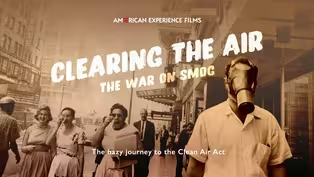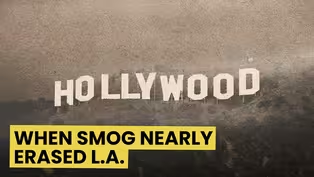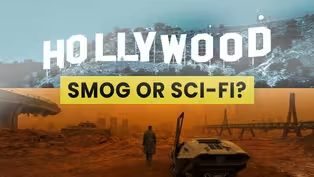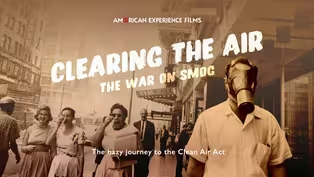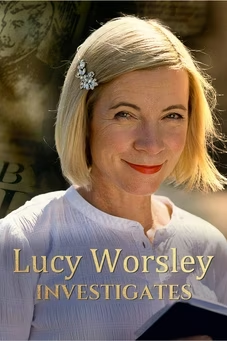
The mystery of L.A.’s smog revealed
Clip: Season 37 Episode 4 | 4m 58sVideo has Closed Captions
The major breakthrough in understanding L.A.'s deadly smog came from a surprising place.
The major breakthrough in understanding L.A.'s deadly smog came from a surprising place.
Problems playing video? | Closed Captioning Feedback
Problems playing video? | Closed Captioning Feedback
Corporate sponsorship for American Experience is provided by Liberty Mutual Insurance and Carlisle Companies. Major funding by the Alfred P. Sloan Foundation.

The mystery of L.A.’s smog revealed
Clip: Season 37 Episode 4 | 4m 58sVideo has Closed Captions
The major breakthrough in understanding L.A.'s deadly smog came from a surprising place.
Problems playing video? | Closed Captioning Feedback
How to Watch American Experience
American Experience is available to stream on pbs.org and the free PBS App, available on iPhone, Apple TV, Android TV, Android smartphones, Amazon Fire TV, Amazon Fire Tablet, Roku, Samsung Smart TV, and Vizio.
Buy Now
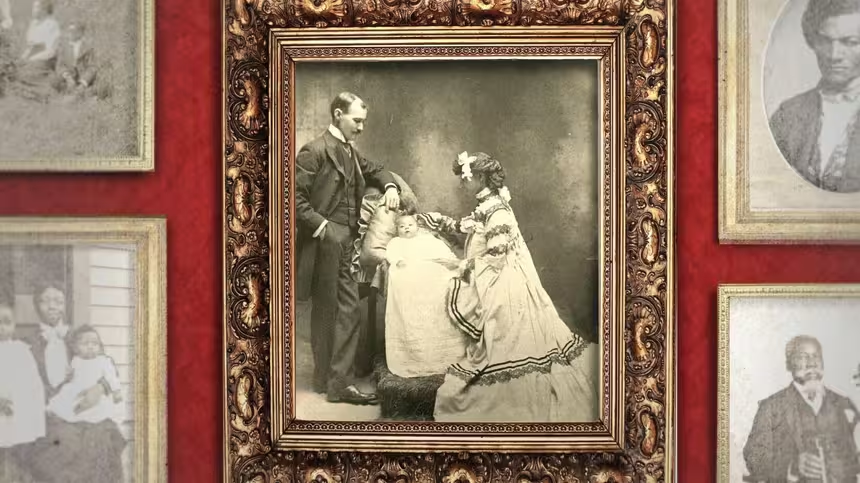
When is a photo an act of resistance?
For families that just decades earlier were torn apart by chattel slavery, being photographed together was proof of their resilience.Providing Support for PBS.org
Learn Moreabout PBS online sponsorshipIt was the worst air pollution attack in the United States history.
[Announcer voice] “A death bring over Pennsylvania's bustling industrial town of Donora.
Residents have difficulty in breathing the murky air as the town is plunged into darkness.” Twenty people died.
It was almost instantaneous.
People were choking in the streets.
Newspapers grabbed hold of the story and it began to run wild across the country.
Donora prompted scientific investigation to try to figure out what was going on.
And the major breakthrough came from a surprising place.
In the 1950s, the Dole Fruit Company was the world's largest producer of pineapples, and it had an interest in using a new chemical technique to better understand its big moneymaking product.
Could you replicate the flavors?
Could you make artificial flavors?
One of the most promising plant chemists at the time was Dr. Ari Haagen Smit at Caltech in Pasadena.
And he's funded by pineapple growers.
His specialty was isolating plant proteins, basically to figure out all of the chemical explanations for why pineapples smell like pineapples.
It turns out that agriculture is really affected by smog.
And one of the things that gets him into studying what is happening to air quality in Southern California is that crops are dying, and they are desperate to figure out why.
What Haagen Smit did was to take actual air and deconstruct it, to show what was making up the substance that was damaging leaves and plants.
His initial approach to figuring out what was in the air was to use exactly the same processes that he'd used for pineapples.
He drew in about 500 cubic feet of air, about the amount that a typical person would breathe in a day.
And when all of that got distilled down into just a few drops of really terrible smelling brown liquid: distilled smog.
Haagen Smit was able to study it at a molecular level.
And one of the important findings was that this was not a sulfur problem, which was what had happened in Donora, Pennsylvania, in other industrial cities.
Actually, what he was finding was large concentrations of ozone.
But it was a bit of a mystery because there were no sources of ozone in Los Angeles.
This is not something that industrial factories just emit.
So something else is going on.
The other thing Doctor Haagen Smit discovers when he analyzes the air is that there's a component in it that comes from petroleum hydrocarbons.
Hydrocarbons are actually a part of fossil fuelsof gasoline.
When gasoline evaporates, it releases hydrocarbons into the air that combine with other chemicals.
But he discovers that smog is actually not just about the chemicals it's also about the sun.
It's the interaction of the hydrocarbons with a mix of chemicals in the air being exposed to the sun that creates ozone.
And of course, Southern California has sun in abundance.
So the first thing he decided to do was to try to recreate smog in the laboratory.
[Interviewer] “This device here recreate smog as we breathe it in Los Angeles.” [Haagen Smit]: “That's right.
There is an abundance of ozone formed here in the air.
And it reacts with, gasoline.” [Interviewer]: “And this, this then that you're making will be what we're breathing today here in Pasadena.
[Haagen Smit: “That is a pretty duplication of it.
The hydrocarbons in the air form ozone in the sunlight.
And that is the beginning of our trouble.
Then we take some gasoline and the vapors of the gasoline.
You will see react now as the ozone.
And we get concentrated smog.” His great discovery is that the combination of the ozone, the hydrocarbons, and their exposure to sunshine creates ozone pollution.
Doctor Haagen Smit calls this photochemical smog.
To learn more, watch Clearing the Air: The War on Smog from American Experience.
Chapter 1 | Clearing the Air: The War on Smog
Video has Closed Captions
Clip: S37 Ep4 | 8m 41s | Watch a preview of Clearing the Air: The War on Smog. (8m 41s)
The Secret Hollywood Campaign to Clean L.A'.s Air
Video has Closed Captions
Clip: S37 Ep4 | 4m 57s | When smog issue plagued their city in the mid 20th century, Angelenos got creative. (4m 57s)
Smog on the Big Screen from Blade Runner to Godzilla
Video has Closed Captions
Clip: S37 Ep4 | 4m 34s | How has L.A.'s history of smog shown up on the big screen? (4m 34s)
Trailer | Clearing the Air: The War on Smog
Video has Closed Captions
Preview: S37 Ep4 | 2m 22s | Watch a preview of Clearing the Air: The War on Smog. (2m 22s)
Providing Support for PBS.org
Learn Moreabout PBS online sponsorshipSupport for PBS provided by:
Corporate sponsorship for American Experience is provided by Liberty Mutual Insurance and Carlisle Companies. Major funding by the Alfred P. Sloan Foundation.


